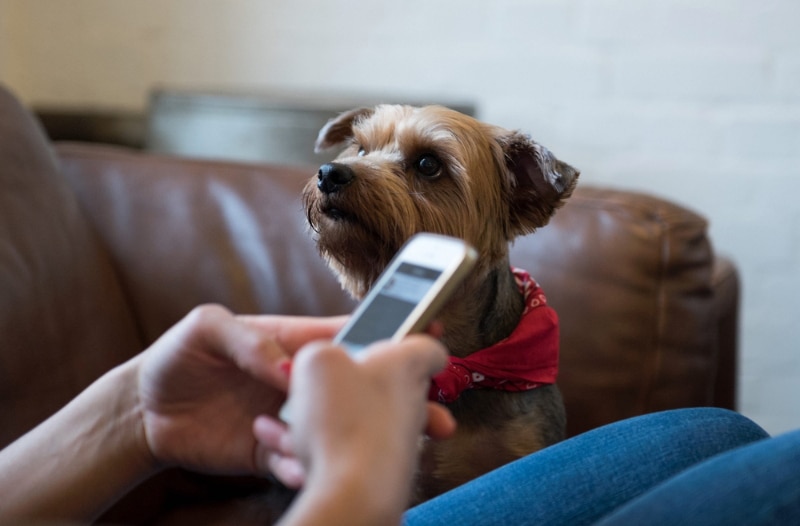Dogs can display various behavioral traits, such as aggression and reactivity. There are various types of dog aggression, and some dog owners wonder if passive aggression is one of them.
There is not much scientific evidence to back up whether dogs can truly be passive-aggressive or not. However, dog owners usually use this term to describe a dog that is bossy or assertive. It’s generally used loosely for dogs that have comical behaviors that might come off as passive-aggressive if they were human.
Let’s go over the signs to look out for in “passive-aggressive” dogs.

The 7 Signs of Passive-Aggressiveness in Your Dog
1. Having Selective Hearing
Dogs with selective hearing seem to only respond to your words when it is something they want to hear. They might come running to you if you say you want to give them a treat or go on a walk but ignore you when you tell them to stop digging. Their selective hearing can make it seem like they purposefully only want to do things that make them happy and ignore you otherwise.
Some dogs may also procrastinate when they hear you say something they don’t like. If they hear you say that you want to clip their nails or place them in their crate, they might act like they didn’t hear you at all. However, they are quick to come running if they hear the treat jar open.

2. Sighing Loudly to Get Your Attention
Dogs can sigh just like humans can. Although dogs can sigh for various reasons, many dog owners believe they do it to sometimes get our attention. Dogs know that a loud sigh is guaranteed to make us look at or feel sorry for them.
Some dog owners even find that their dog sighs loudly after they are told off for doing something they weren’t supposed to. It’s like their way of sulking when things don’t go their way. Perhaps you had to take your dog’s chew toy away, and they resort to lying on the floor and letting out a sigh.
3. Interrupting You
Dogs can become feisty when they want something and start interrupting you to get you to respond. If you have been spending time reading a book or scrolling on your phone, your dog might find a way to interrupt you. They could do this by pawing at you or the object or whining till you notice them.
Some dogs are displeased when other things have our attention and don’t seem to feel bad for interrupting us.

4. Blocking the Television
Another way for dogs to interrupt something that has our attention is by blocking the television. You sit down to relax to your favorite show, only to have your passive-aggressive dog block it. This can be viewed as their way of stopping us from looking at something that is preventing them from getting our attention.
Dogs seem to find many creative ways to get our attention, and blocking the television is a common one.
5. Whining at You
Dogs can become vocal when they want something or want to communicate with us. It’s not unusual for some passive-aggressive dogs to whine when they don’t seem to be getting their way. You could be telling your dog that it isn’t feeding time yet, and they whine to interrupt you while you are speaking.
This seems to be common in dog breeds like Huskies and Alaskan Malamutes.

6. Pawing at You Until You Give Them Attention
Passive-aggressive dogs will stop at nothing to get your attention, even if it means they need to paw at you. Dogs usually do this because they know that pawing at you will get them what they want, whether it’s attention, affection, or communication. If you are on your phone or reading a book, they might try to paw at it so you will lose focus and pay attention to them instead.
7. Taking Over Your Spot on the Bed or Couch
If getting out of bed or your seat means risking it being taken over by your dog, it could be a sign of passive-aggression. This adorable yet sometimes frustrating behavior often has you begging for your spot back, only to be met with a selective-hearing dog that won’t budge.
You will probably need to give up ever trying to win your spot back, as most dogs will quickly get themselves comfortable so you don’t try to move them.


Conclusion
Passive aggression is not well understood in dogs. Therefore, it is mainly used as a light-hearted way to describe stubborn, bossy, or assertive dogs. Passive-aggressive dogs won’t hesitate to show you who’s boss around the house and seem to know that you won’t get upset over their comical behavior and adorable mannerisms.
Featured Image Credit: atiger, Shutterstock


















